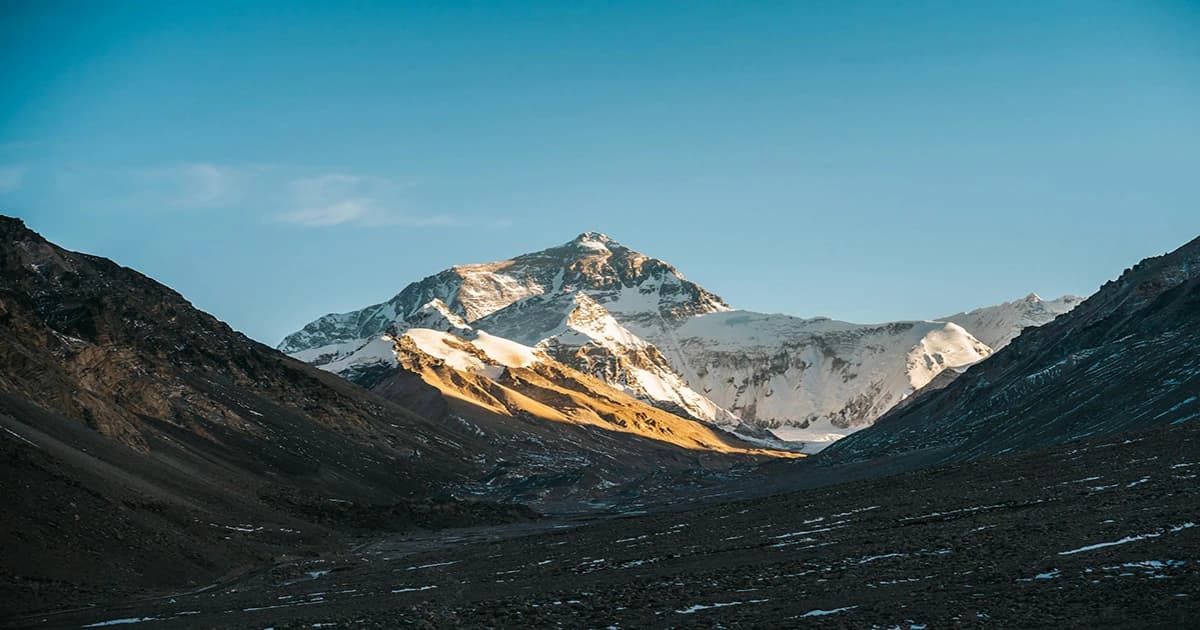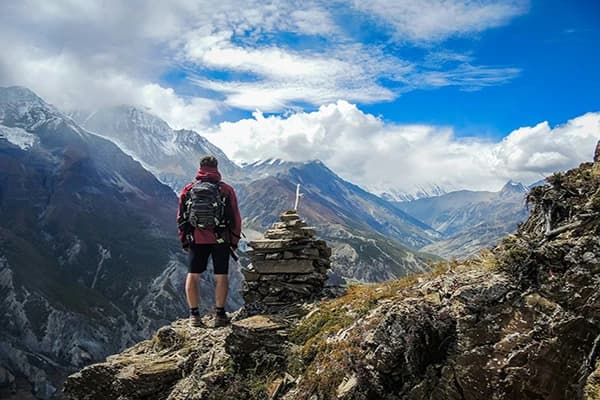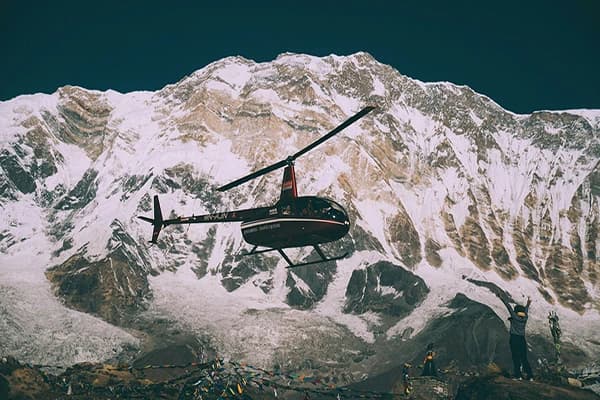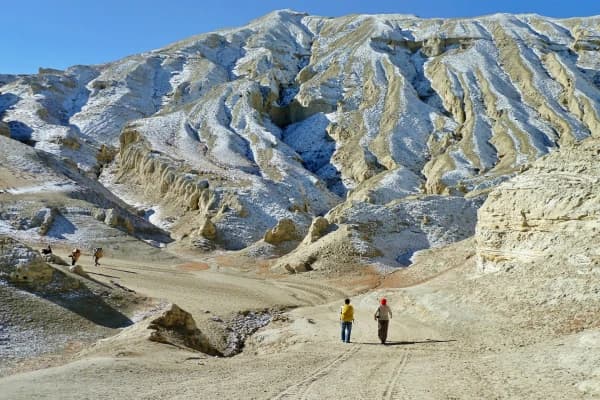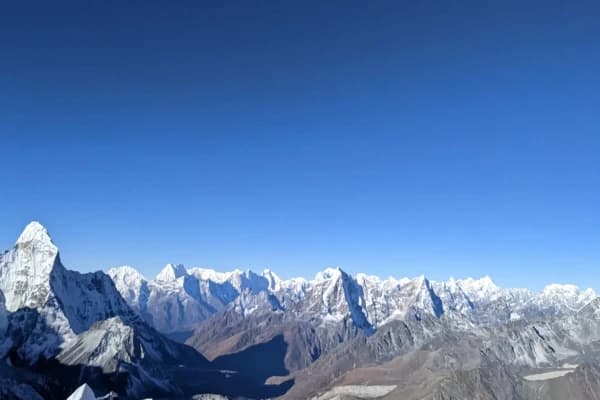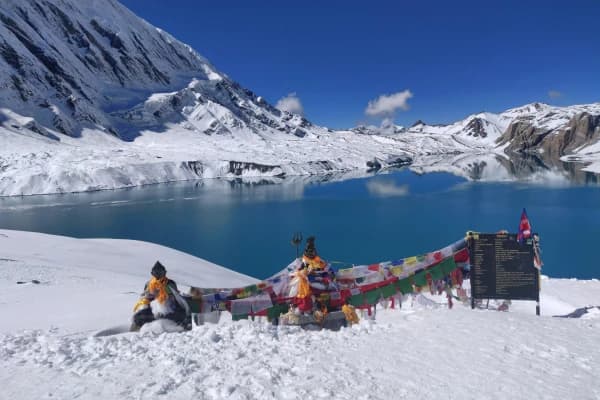Experience the Everest Base Camp Comfort Trek with upgraded lodges, fine dining, and breathtaking Himalayan views – the perfect blend of adventure and luxury.
Everest Base Camp Comfort Trek: The Ultimate Luxury Himalayan Adventure
Introduction to Everest Base Camp Comfort Trek
The Everest Base Camp Comfort Trek is a unique way to walk to the base of Mount Everest and stay in nicer lodges along the way. You can enjoy the famous trails of the Khumbu region without having to sleep in very basic places on this trek. The Everest Base Camp Comfort Trek is perfect for you if you love mountains but also want to sleep in a warm bed, take a hot shower, and get more rest.
Everest Base Camp elevation is of about 5,364 meters (17,598 feet)above sea level. That is a very high place in the Himalayas. Because of this Everest base camp altitude, the air is thin and the weather can change fast. You have to walk slowly to Everest base camp so that your body can get used to the height safely.
On a comfortable mount Everest base camp trek, you'll walk through Sherpa villages, past rhododendron forests, and over suspension bridges. You stay in lodges instead of simple teahouses. The beds and food are better. Because of these extras, the cost of the Everest base camp trek is higher than the cost of the standard trek. Travel companies in Nepal like Nepal Excursion set up these comfortable lodges, hire guides, and handle all the permits and other details so you can enjoy your trip without any tension.
What Makes the Comfort Trek Different?
The Everest Base Camp Comfort Trek takes the same famous path as the classic trek, but you will see and feel things in a very different way. The goal is to make the trip safer, more relaxing, and more fun, while still giving you the full experience of reaching the Everest Base Camp elevation at 5,364 meters.
Here are the main features that set the comfortable Everest Base Camp trek apart:
1. Better Accommodation
-
Instead of staying in simple teahouses, trekkers stay in fancy lodges with private rooms, bathrooms attached (at lower altitudes), and heated dining areas.
-
Some lodges even have Wi-Fi, comfy beds, and places to charge your phone.
2. Quality Meals
-
On a comfort Everest trek, you get to eat fresh, clean meals that are made with more care than usual teahouses.
-
There are both Nepali and international dishes on the menu. Some Nepali favorites are dal bhat, and some international dishes are pasta, pancakes, and soups.
3. Professional Support
-
Experienced leaders guide trekkers, and porters carry their bags.
-
Guides are trained in altitude safety, making the trek easier at the high Everest Base Camp altitude.
4. More Rest and Acclimatization
-
There are extra rest days built into the itinerary in places like Dingboche and Namche Bazaar.
-
This helps keep you from getting sick from the altitude and makes Mount Everest Base Camp trek more pleasant.
5. Extra Comfort Options
-
Some packages include a helicopter ride back from Everest Base Camp or Gorakshep, which saves time and avoids the long walk back.
-
This makes the hike possible for people who don't have a lot of time or energy.
6. Personalized Experience
-
You have a more relaxed and personal trip when there are fewer people in your group and the guides pay more attention to you.
-
You don't have to worry about logistics because travel agencies in Nepal like Nepal Excursion take care of everything for you, from permits to comfortable lodges.
The Everest Base Camp comfort trek is great for people who want to walk to the world's most famous base camp but want to do it in a more relaxed, safe, and stylish way. It has the best of both worlds: the adventure of trekking in the Himalayas and the comfort of modern life.
Trek Route & Itinerary Overview
The Everest Base Camp Comfort Trek with Nepal Excursion is a one-of-a-kind way to see the Khumbu region while staying in comfortable lodges and enjoying cultural and scenic highlights. This 13-day trek is for people who want to have fun in the Himalayas without having to deal with high altitudes or rough teahouse conditions. Everest View Point, at 3,880 m, is the highest point on this trek. It has amazing views without the dangers of higher elevations.
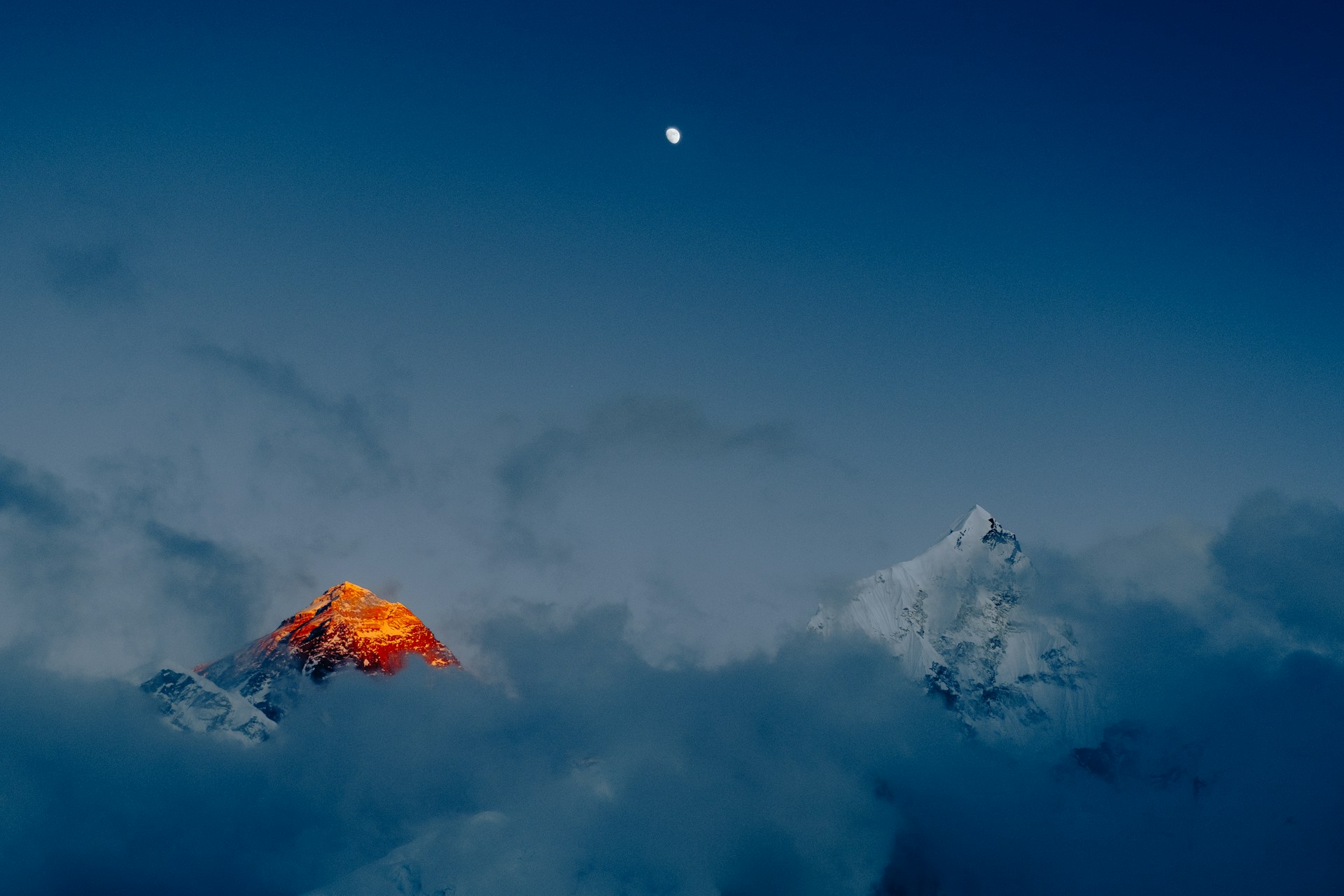
Day-by-Day Overview
-
Day 1: Arrival in Kathmandu (1,350 m)
A representative will meet you at the airport and take you to your hotel. Your guide will go over the trek, the schedule, and safety tips during the welcome briefing and dinner. -
Day 2: Kathmandu Sightseeing
Visit UNESCO sites like Boudhanath Stupa, Pashupatinath, Swayambhunath (Monkey Temple), and Kathmandu Durbar Square. This day gives you a taste of Nepal's rich culture before you go hiking. -
Day 3: Fly to Lukla (2,840 m) & Trek to Phakding (2,610 m)
A scenic flight takes you to Lukla, where your trek begins. You walk through suspension bridges, pine forests, and trails along the river to get to Phakding, where you stay in a comfortable lodge. -
Day 4: Trek to Namche Bazaar (3,440 m)
The trail goes up through forests and over the Dudh Koshi River, where famous bridges are. Namche Bazaar is the center of Sherpa culture, with stores, markets, and monasteries. -
Day 5: Acclimatization in Namche & Everest View Point (3,880 m)
A short hike to Everest View Point gives you amazing views of Mount Everest, Lhotse, Nuptse, and Ama Dablam. Go back to Namche to rest and get used to the altitude. -
Day 6: Trek to Thame (3,800 m)
Go to Thame, a peaceful Sherpa village with a well-known monastery. This trail is quieter, so you can get a more real cultural experience. -
Day 7: Return to Namche Bazaar
Go back to Namche, stopping at viewpoints and small towns along the way. Visit local shops and cafes and see what life is like for the Sherpas. -
Day 8: Trek Down to Phakding (2,610 m)
Go down through the beautiful trails along the rivers and in the woods. Stay in a comfort lodge in Phakding and enjoy freshly made meals. -
Day 9: Trek to Lukla (2,840 m)
Your final trekking day. Enjoy the comfort of a lodge in Lukla with other trekkers as you celebrate the end of your trek. -
Day 10: Fly Back to Kathmandu
You fly back to Kathmandu in the morning. You have free time to relax or see the city at your own pace. -
Day 11: Kathmandu Valley Sightseeing
Patan Durbar Square and Bhaktapur are known for their medieval architecture, temples, and local crafts. The day ends with a goodbye dinner. -
Day 12: Departure from Kathmandu
Transfer to the airport for your flight home. -
Day 13: Buffer/Extra Day
This day gives you some leeway in case your flight from Lukla is late or you want to see more sights.
Key Highlights of the Comfort Trek
-
Maximum altitude: 3,880 m at Everest View Point, reducing risk of altitude sickness.
-
The highest point is 3,880 m at Everest View Point, which lowers the risk of altitude sickness.
-
There are luxury lodges along the way with hot showers, warm dining areas, and cozy rooms.
-
Instead of trekking at very high altitudes, learn about Sherpa culture, visit monasteries, and see beautiful views.
-
Includes Kathmandu Valley sightseeing, adding a cultural dimension to your adventure.
-
Nepal Excursion takes care of everything, from permits to guides to logistics, to make sure everything goes smoothly
Best Time to Do the EBC Comfort Trek
The Everest Base Camp Comfort Trekcan be done almost year-round, but the best times are when the weather is clear, the skies are bright, and you can see the mountains. Picking the right time makes sure you are safe, comfortable, and can see stunning views.
1. Spring (March–May)
-
Why it’s ideal: The weather is nice, the rhododendrons are in bloom, and the views of the mountains are usually clear.
-
Highlights: Green valleys, bright flowers, and busy Sherpa villages are some of the best things about this place.
-
Comfort factor: The weather is mild, which makes it easier to walk, and the lodges are all open.
2. Autumn (September–November)
-
Why it’s ideal: The skies are clearest and the mountain views are best after the monsoon season.
-
Highlights: Fresh air, clear views of Mount Everest, Lhotse, and Ama Dablam, and lively local festivals.
-
Comfort factor: The weather is stable, so trekking is safe and comfortable at all altitudes.
3. Winter (December–February)
-
Why it’s less ideal: Trails can be slippery when it's very cold and there is snow.
-
Highlights: There are fewer hikers and the villages are quiet, which makes for a peaceful atmosphere.
-
Comfort factor: Lodges may not have a lot of amenities, so it's important to have the right winter gear.
4. Monsoon (June–August)
-
Why it’s not recommended: Heavy rain can make trails slippery, cause landslides, and make it hard to see.
-
Comfort factor: Lodges might not be as comfortable, and trekking can be hard on the body.
Summary Recommendations
The best times to do the EBC Comfort Trek are in the spring (March to May) and fall (September to November). These times of year have nice weather, clear views of the mountains, and good conditions for hiking. Spring brings bright colors to the landscape, and fall has the most stable skies for taking pictures.
Travel companies in Nepal like our Nepal Excursionplan itineraries around these months to make sure to provide maximum comfort and safety, making your comfort Everest trek enjoyable and memorable.
Costs, Services & What’s Included
The Everest Base Camp Comfort Trek is a high-end trekking package for people who want to experience the Himalayas without giving up comfort. Prices change based on the season, the number of people in the group, and the level of accommodation, but most packages include the basic services needed to make the trek go smoothly and be fun.
1. Typical Costs
-
Average Package Price: $2,500–$3,200 per person for 12–14 days.
-
Factors affecting cost:
-
Season (spring and fall are the most popular times of year and cost a little more)
-
Lodges and private rooms are a luxury.
-
Size of the group and customizations
-
Extra services like helicopter rides back or more sightseeing
-
2. Services Usually Included
-
Airport transfers in Kathmandu
-
Domestic flight: Kathmandu ↔ Lukla
-
You can stay in comfortable lodges and hotels, with private rooms at lower altitudes and heated lodges at higher altitudes.
-
All meals during the trek (breakfast, lunch, and dinner)
-
Guides who know the area, the culture, and how to stay safe at high altitudes
-
Porters to carry luggage, so you only need a daypack
-
Trekking permits: TIMS card, Sagarmatha National Park entry
-
First aid kit and emergency support
3. Services Sometimes Optional / Extra
-
Return by helicopter from Gorakshep or Lukla
-
Travel insurance that covers trekking at high altitudes
-
Things like drinks, snacks, Wi-Fi, or souvenirs that you buy for yourself
-
Advice on how to tip guides and porters
4. Why the Cost is Worth It
-
You get cozy lodges instead of simple teahouses.
-
Trekking is safer and easier with experienced guides and porters.
-
The food is fresh and clean, and the heated dining areas make the evenings cozy.
-
Extra services like acclimatization days and sightseeing are included, which lowers the risk of altitude sickness and adds cultural value.
Travel companies in Nepal like our Nepal Excursion make sure to take care of all the details, including permits, transportation, and support, so you can focus on the trek itself instead of planning every little thing. The comfort trek is perfect for people who want to see Everest in a safe, stress-free way that doesn't skimp on adventure in the Himalayas.
Final Tips & Reflections
The Everest Base Camp Comfort Trek is a once-in-a-lifetime adventure in the Himalayas that puts safety, comfort, and culture first.
Here are some important tips and things to think about to make the most of your trip:
1. Health and Acclimatization
-
Take your acclimatization days very seriously, especially in Namche Bazaar and at the Everest View Point.
-
To avoid getting sick at high altitudes, drink a lot of water and stay away from alcohol.
-
On days when you go trekking, it's important to do light exercise, stretch, and get enough sleep.
2. Packing & Gear
-
Bring clothes that can be layered because the weather can change quickly. Even in the spring and fall, mornings and evenings can be cold.
-
Bring sturdy trekking shoes, trekking poles, and warm sleeping gear.
-
Don't forget to protect yourself from the sun. Sunglasses, sunscreen, and a hat are all important when you're in the sun at high altitudes.
3. Respect Local Culture
-
There are Sherpa communities and Buddhist monasteries in the Khumbu area. When you go to villages or religious sites, be polite.
-
Learn some basic Nepali greetings or phrases; the locals will like it.
4. Photography & Memories
-
Carry a good camera or smartphone; the views of Everest, Lhotse, Ama Dablam, and Nuptse are breathtaking.
-
Early mornings are ideal for photography as the mountains are clearer before clouds build up.
5. Travel Logistics
-
Because the weather can cause delays, you should plan to spend extra days in Kathmandu as a buffer for flights to and from Lukla.
-
Always have some cash on you because there aren't many ATMs along the way.
Reflections
The Everest Base Camp Comfort Trek is perfect for people who want to experience the Himalayas without having to deal with rough teahouse conditions or long, tiring treks at high altitudes. It has beautiful views, Sherpa culture, and cultural sightseeing in Kathmandu, making it a safe, well-rounded, and interesting trip.
When you go on a trek with us Nepal Excursion, you get professional guides, porters, and comfortable places to stay. This lets you fully enjoy the journey, the mountains, and the culture. This trek shows that you don't have to do something crazy to enjoy Everest. Anyone looking for adventure in the Himalayas can do it safely, easily, and leave with many lasting memories.

